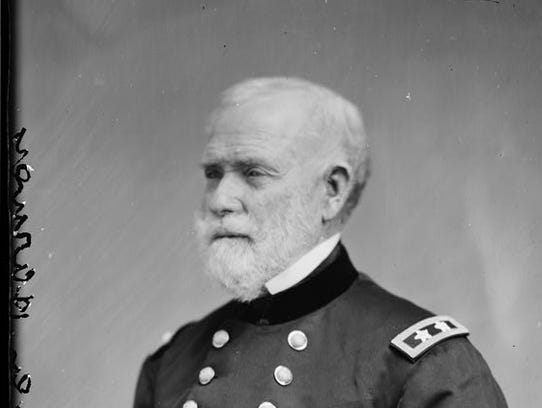Once again, it was a good year for the Notorious SleuthSayers Gang. In the Flash category Travis Richardson was shortlisted for "Final Testimony," which appeared in Flash Fiction Offensive (ed. Hector Duarte, Jr. and Rob Pierce, July 10, 2017) and Elizabeth Zelvin scored for "Flash Point," in A Twist of Noir (ed. Christopher Grant, March 20, 2017).
Paul D. Marks is a finalist for the Novelette zone with "Windward, from Coast to Coast: Private Eyes from Sea to Shining Sea (ed. Andrew McAleer and Paul D. Marks, Down & Out Books, January 2017)
 And I made it into the Short Story category with "The Cop Who Liked Gilbert and Sullivan" Sherlock Holmes Mystery Magazine #23, (ed. Marvin Kaye, Wildside Press, October 2017)
And I made it into the Short Story category with "The Cop Who Liked Gilbert and Sullivan" Sherlock Holmes Mystery Magazine #23, (ed. Marvin Kaye, Wildside Press, October 2017)Congrats to all my fellow finalists, SleuthSayers or not!
 2. A Nonfutile, Nonstupid Gesture. I recently watched the Netflix original movie, A Futile and Stupid Gesture. Some of you may recognize that title as a line from Animal House.
The movie tells the story of Doug Kenney who (with others) created
National Lampoon, Animal House, Caddyshack, and a hilarious little book-length
parody called Bored of the Rings. The
flick is narrated by Martin Mull playing an older version of the main
character. ("I'm a narrative device," he explains.)
2. A Nonfutile, Nonstupid Gesture. I recently watched the Netflix original movie, A Futile and Stupid Gesture. Some of you may recognize that title as a line from Animal House.
The movie tells the story of Doug Kenney who (with others) created
National Lampoon, Animal House, Caddyshack, and a hilarious little book-length
parody called Bored of the Rings. The
flick is narrated by Martin Mull playing an older version of the main
character. ("I'm a narrative device," he explains.)The reason I bring this flick up is that at one point Mull points out something in the movie that is not true to life and then announces that they are going to provide a list of other inaccuracies. It rolls up the screen quickly in tiny print but you can go back at the end and read them all. They range from "Characters A and B met in a party, not in a bar," to: "Everyone was much more racist and sexist."
I loved this.
 Whenever I see a movie based on true events I wind up
going to the web to see what was real and what wasn't. (I knew
that tube scene in The Darkest Hour was fake.) Bravo to the folks who made Gesture, which, by the way, is definitely worth seeing.
Whenever I see a movie based on true events I wind up
going to the web to see what was real and what wasn't. (I knew
that tube scene in The Darkest Hour was fake.) Bravo to the folks who made Gesture, which, by the way, is definitely worth seeing. 3. You call that Justice? Lowering the Bar is a wonderful blog about
the quirks of our legal system. The most popular piece last year
was the true story of a lawyer whose pants literally caught fire
while he was summing up the defense of his client, who was accused of
arson. This is the sort of thing that drives fiction writers to
despair, because you couldn't put it in fiction.
3. You call that Justice? Lowering the Bar is a wonderful blog about
the quirks of our legal system. The most popular piece last year
was the true story of a lawyer whose pants literally caught fire
while he was summing up the defense of his client, who was accused of
arson. This is the sort of thing that drives fiction writers to
despair, because you couldn't put it in fiction. But I want to tell
you about this piece
which has everything for the SleuthSayers audience: a mystery, law,
grammar issues, snark, and Sherlock Holmes. The main topic is
this portrait which resides in the Massachusetts Supreme Judiciary
Court, but no one knows who it is. That's the mystery. The
rest comes from the newspaper quoting the Chief Justice urging the
public to "put on their Sherlock Holmes’ hats " and try to figure out
who is pictured. Kevin Underhill, who runs the blog, is outraged:
But I want to tell
you about this piece
which has everything for the SleuthSayers audience: a mystery, law,
grammar issues, snark, and Sherlock Holmes. The main topic is
this portrait which resides in the Massachusetts Supreme Judiciary
Court, but no one knows who it is. That's the mystery. The
rest comes from the newspaper quoting the Chief Justice urging the
public to "put on their Sherlock Holmes’ hats " and try to figure out
who is pictured. Kevin Underhill, who runs the blog, is outraged: So. “Sherlock Holmes” is not a plural noun—unless you’re talking about several men named “Sherlock Holme.” If such men exist, and they have hats, and you collected the hats of more than one such man, then,
my friend, you would have in your possession “the Sherlock Holmes’
hats” (that is, the hats of the men named “Sherlock Holme”). “By
Socrates’ beard,” you could say then, “I have here all the Sherlock
Holmes’ hats!”
So. “Sherlock Holmes” is not a plural noun—unless you’re talking about several men named “Sherlock Holme.” If such men exist, and they have hats, and you collected the hats of more than one such man, then,
my friend, you would have in your possession “the Sherlock Holmes’
hats” (that is, the hats of the men named “Sherlock Holme”). “By
Socrates’ beard,” you could say then, “I have here all the Sherlock
Holmes’ hats!”  4. Comic Sans and Brimstone. This is a public service announcement. I just want to warn you do not go to the website Clients From Hell.
It is a hilarious time suck. Anonymous people (mostly graphic
designers) report on horrifying encounters with horrifying
customers. Here are some of the main categories (as judged by me).
4. Comic Sans and Brimstone. This is a public service announcement. I just want to warn you do not go to the website Clients From Hell.
It is a hilarious time suck. Anonymous people (mostly graphic
designers) report on horrifying encounters with horrifying
customers. Here are some of the main categories (as judged by me).The vague: "Make it more modern and traditional."
The clueless: "I can't find the ENTER button on my screen."
The Arrogant: "My friends at NASA says this is a terrible website design."
The Holy: "We won't pay you but you will be working for God."
The Unholy: "Take out the pictures of Black people. Our customers are White."
The Crooked: "Just copy it off our competitor's website."
 The Greedy: "You're a freelancer. I thought that meant you worked for free."
The Greedy: "You're a freelancer. I thought that meant you worked for free."Stay away from this page, I beg you. It will consume many hours of your life.
5. Stop the Presses! Do you remember how in newspaper movies they would announce that they had to stop everything and tear out the front page because of breaking news?
I had to throw out the last item I had set up today because it was just announced that my book WHEN WOMEN DIDN'T COUNT has won the Lane/Saunders Memorial Research Award. That's the big prize for scholarship in government information. The Government Documents Round Table said a bunch of nice things about the book here. I would be happy to say some nice things right back.







































